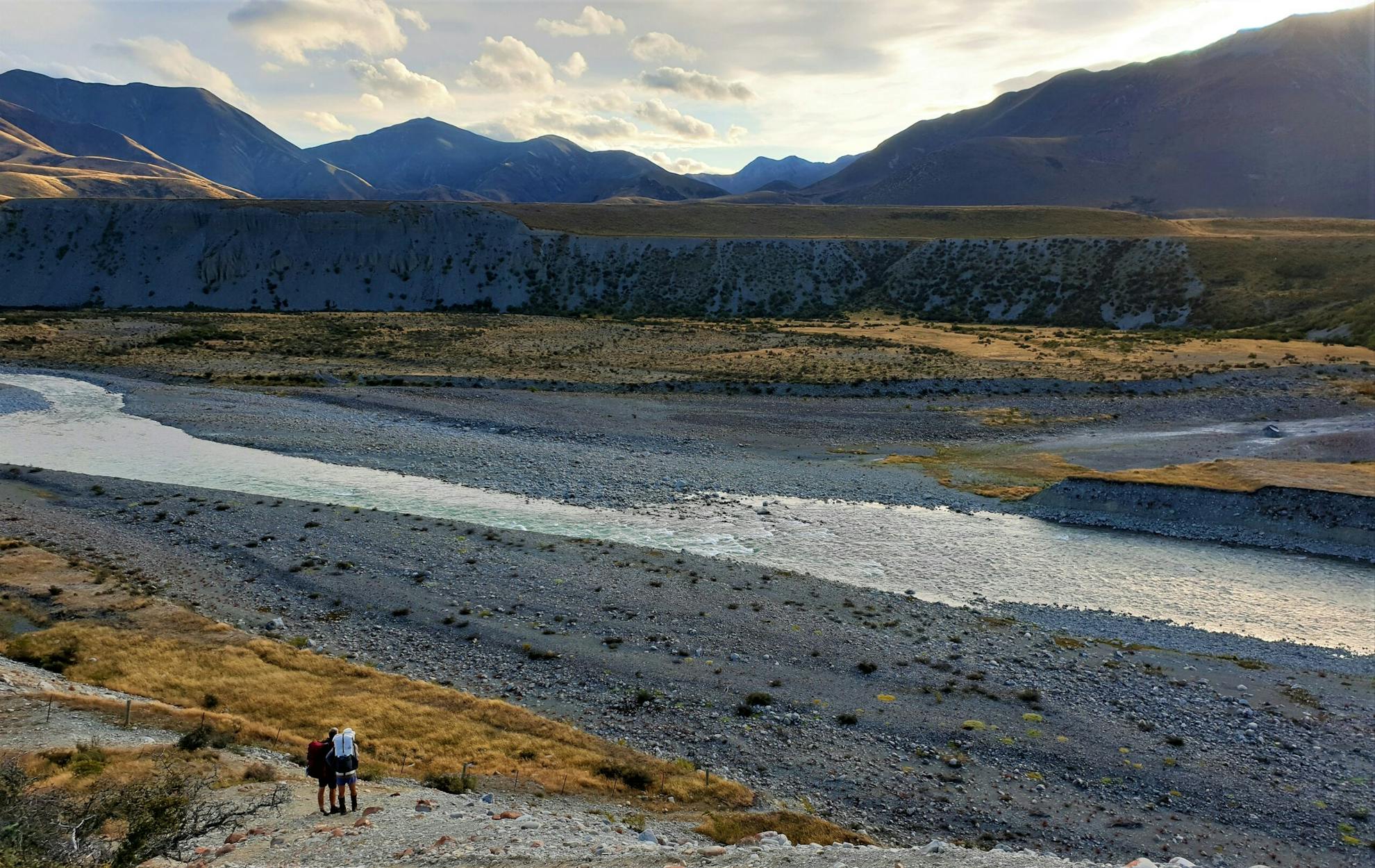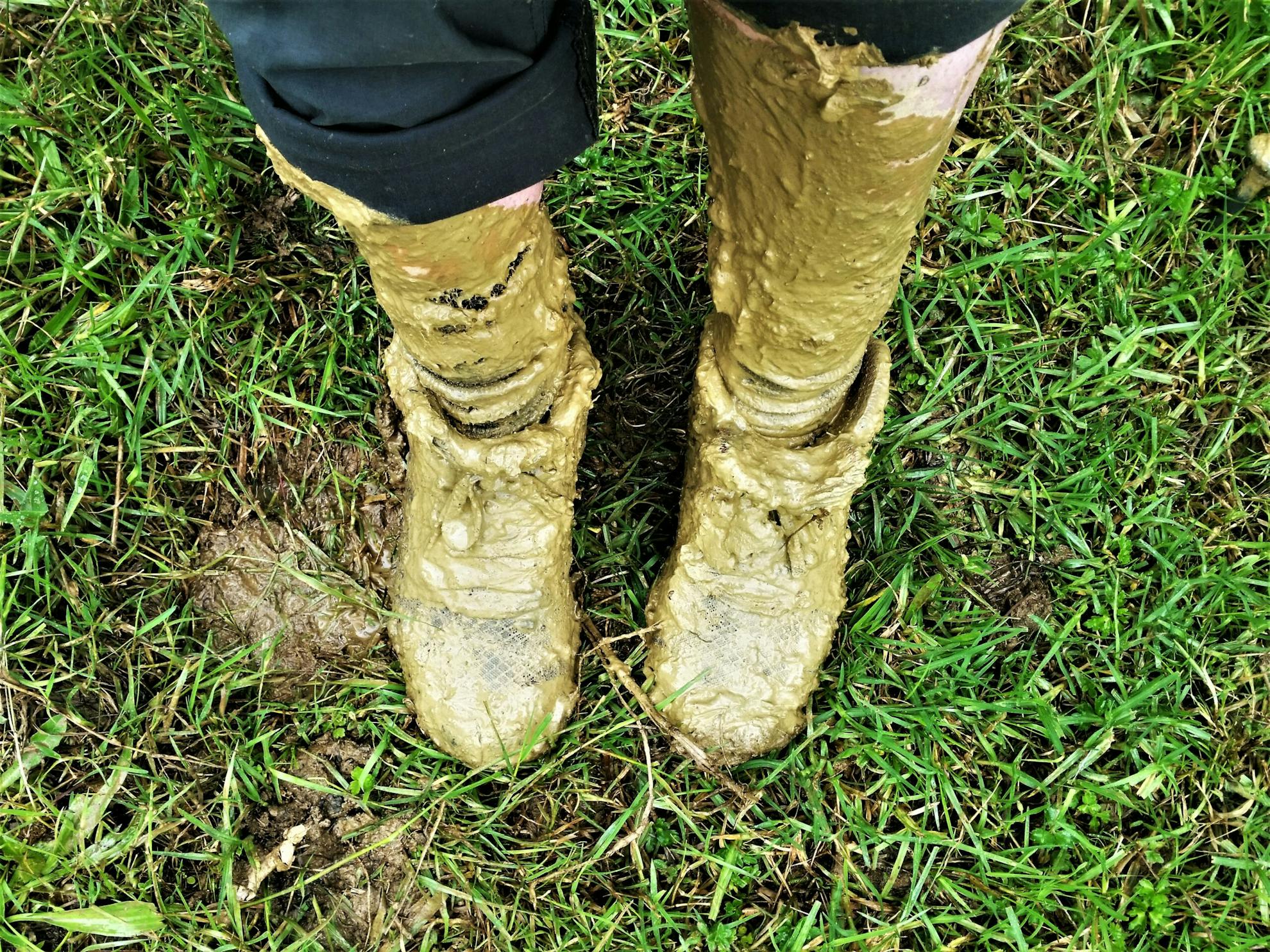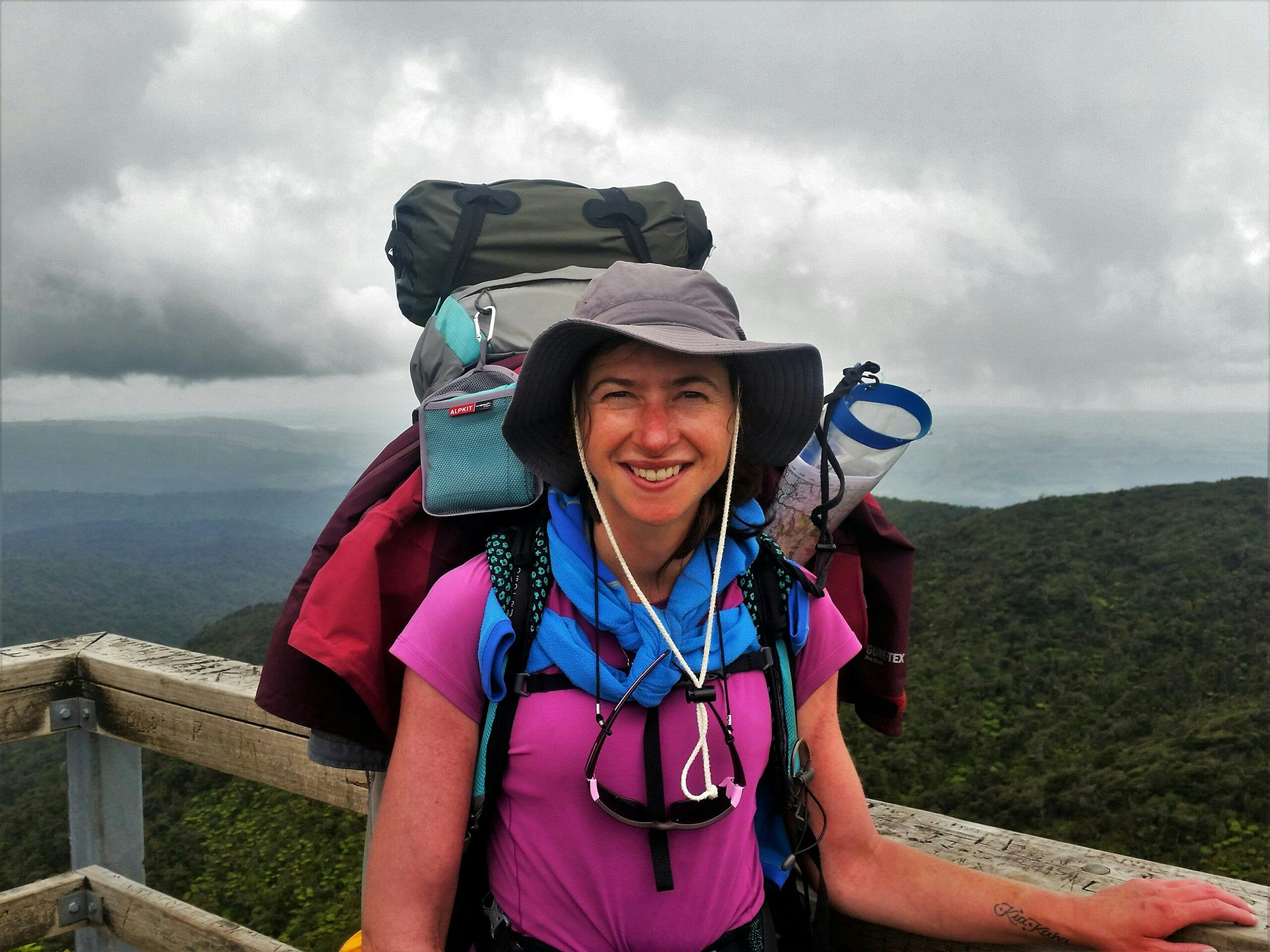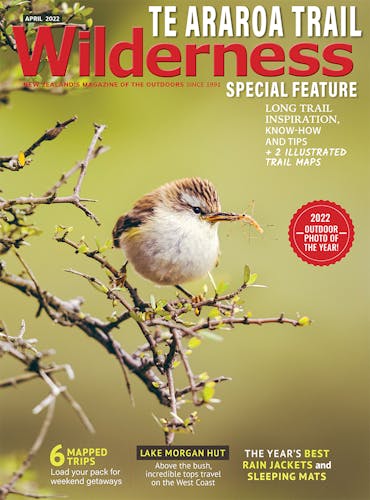You live, breathe, sleep a thru-hike – it’s your life for three, four, six months. But even after it’s finished and you’re back in the real world, the trail’s tattoo remains.
It was weird being on a bus without a backpack and walking poles, without smelling like some rotting piece of fruit. It was a new experience after four and a bit months of walking along the squiggle of Te Araroa Trail.
Through the window, I could see two men stopped by someone in the street. I could tell in an instant they were TA thru-trampers: dishevelled hair, beards long and scraggly. Their clothes ripped and grubby, hanging off their stick-like bodies, two sizes too big.
Yet their unkempt and emaciated figures were full of strength and energy, and they bounded away from the stranger, backpacks bulging, walking poles clacking on the sidewalk. They were the trail. It sang in their hearts and seeped from their pores.
Not long ago, that was me. Living, breathing, sleeping Te Araroa Trail. Now, despite my ruddy tan, I merged into the upholstery of the bus seat, no longer a novelty. I was ‘one of them’ now. A ‘civilian’ in the real world.
But the trail still bubbled in my blood. You can take the girl out of the trail, but you can’t take the trail out of the girl. It’s there forever. Like a birthmark. I could wear high heels and fancy pink lipstick, blow dry my hair and exchange the bum-bag for a handbag but deep down I’d always be a thru-hiker.
Because that’s the thing with long-distance trails. They’re transformative. Life-changing. You start as one person and finish as another. As the days merge into weeks and the weeks into months, the trail moulds you, berates you, tricks you and taunts you. But most of all, the trail is a teacher, a saviour and a healer.
When I stood at Cape Reinga many months ago with 17kg on my back, fear and doubt gripped my heart. Who was I to take on 3000km? Was I good enough?
By the time I reached Ahipara at the end of Ninety Mile Beach, five days and 100km later, I was already a different person. I’d pitched a tent by myself, used a water filter for the first time and braved out the sounds of ‘giant’ possums foraging in the night. I’d dealt with rain and sun, five days of wet, blistered feet, and the most painful, monotonous, never-fricken-ending beach I’d ever walked – nay, hobbled – along. In five days, I’d gone from a ninny-knickers to a proper walker. But not just any walker; a TA walker.

Broken down, a thru-hike is easy: walk, eat, sleep, repeat. Just one foot in front of the other. As simple as that. Keep that up and after a couple of weeks, the outside changes start to be seen. First, it’s the trail legs where a 30km day doesn’t faze you anymore. Then the weight starts to drop off and suddenly you have leg muscles you never knew existed. You become a walking machine.
But these changes are transient. Stop walking for long enough and you wouldn’t know you’d trekked across a country. It’s the inside changes that leave a mark. And when Te Araroa gets tough, these changes can be profound.
For months, the TA threw sandy beaches and long-dusty roads at me, wild – almost impenetrable – forests, pockmarked and ankle-spraining farmland, and trails that were barely walkable, if not non-existent. There were mountains so steep, it was a wonder the scree didn’t slide right off, and river crossings that were borderline life or death. I battled torrential rain, 98 per cent humidity, 100km/hr winds, scorching mid-30°C days, even a snowstorm. And then there was the mud. Brown mud, grey mud, mud with green slime, mushy mud, watery mud, mud that looked like whipped chocolate mousse, knee-high mud; soul-destroying mud.
Bob Marley once said: “You never know how strong you are until being strong is the only choice you have.” When you’re on the TA and you spend 12 hours walking through knee-deep mud, you find strength. When you’re forced by the weather conditions to admit defeat, you find resilience. When you’re lost or mere centimetres from falling off a mountain, you find courage. When you almost drown during a river crossing, you find determination. And when you walk 3000km, you find yourself.

These things can’t be unfound. That’s the magic of thru-hiking – they stay with you long after you’ve chucked that third pair of walking shoes.
A long-distance walk is a journey into the unknown, towards a future you can’t predict and a destination you can’t see. The first step is always the hardest part because it requires a leap of faith.
Actually, that’s life. A new job, moving to a new town, a break-up. All open the door to the unknown. All require a leap of faith that on the other side you’ll be OK. And you will be because the lessons from a thru-tramp are an indelible ink on your soul. You will always be OK. Tomorrow is another day. You are stronger, more capable than you think you are.
The freshly showered girl sitting on that bus watching the TA trampers march off was a different person to the one who stood at Cape Reinga. Stronger, resilient, adaptable. The trail had rewarded me in ways far beyond those golden peach sunsets from mountain tops. It had brought me closer to nature, and closer to my true nature. I learned I didn’t have to walk 3000km to prove I was enough. I walked 3000km to learn I was enough already.
The blisters and bruises may have faded, the muscles now hidden under a soft layer of fat, but the tattoo of thru-hiking Te Araroa Trail will stay forever, etched into my skin and in my heart.








